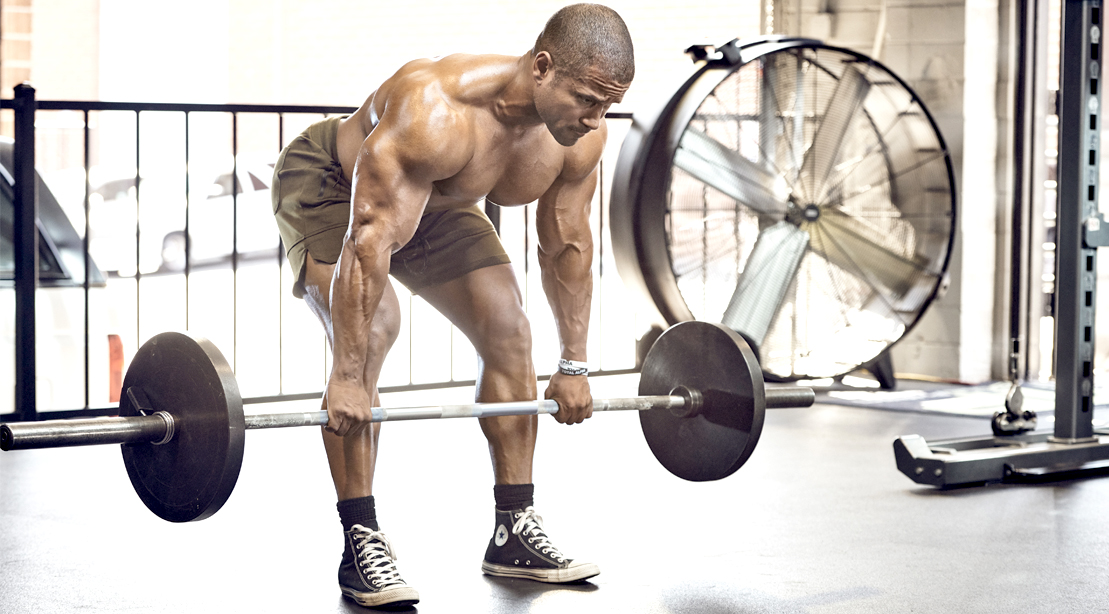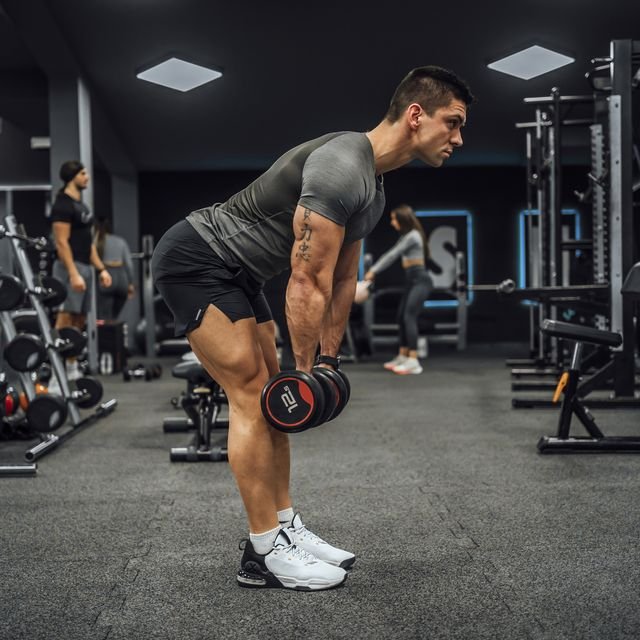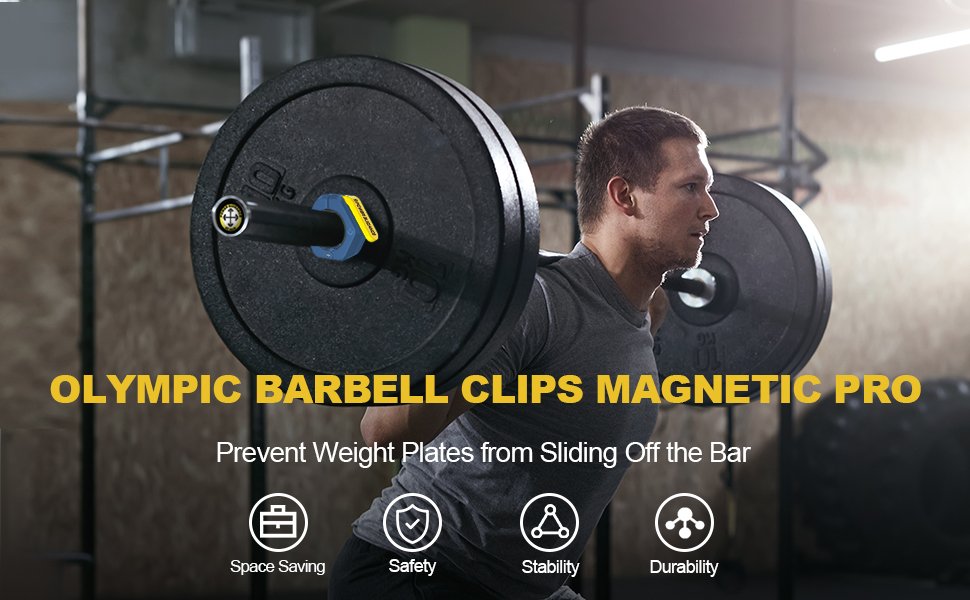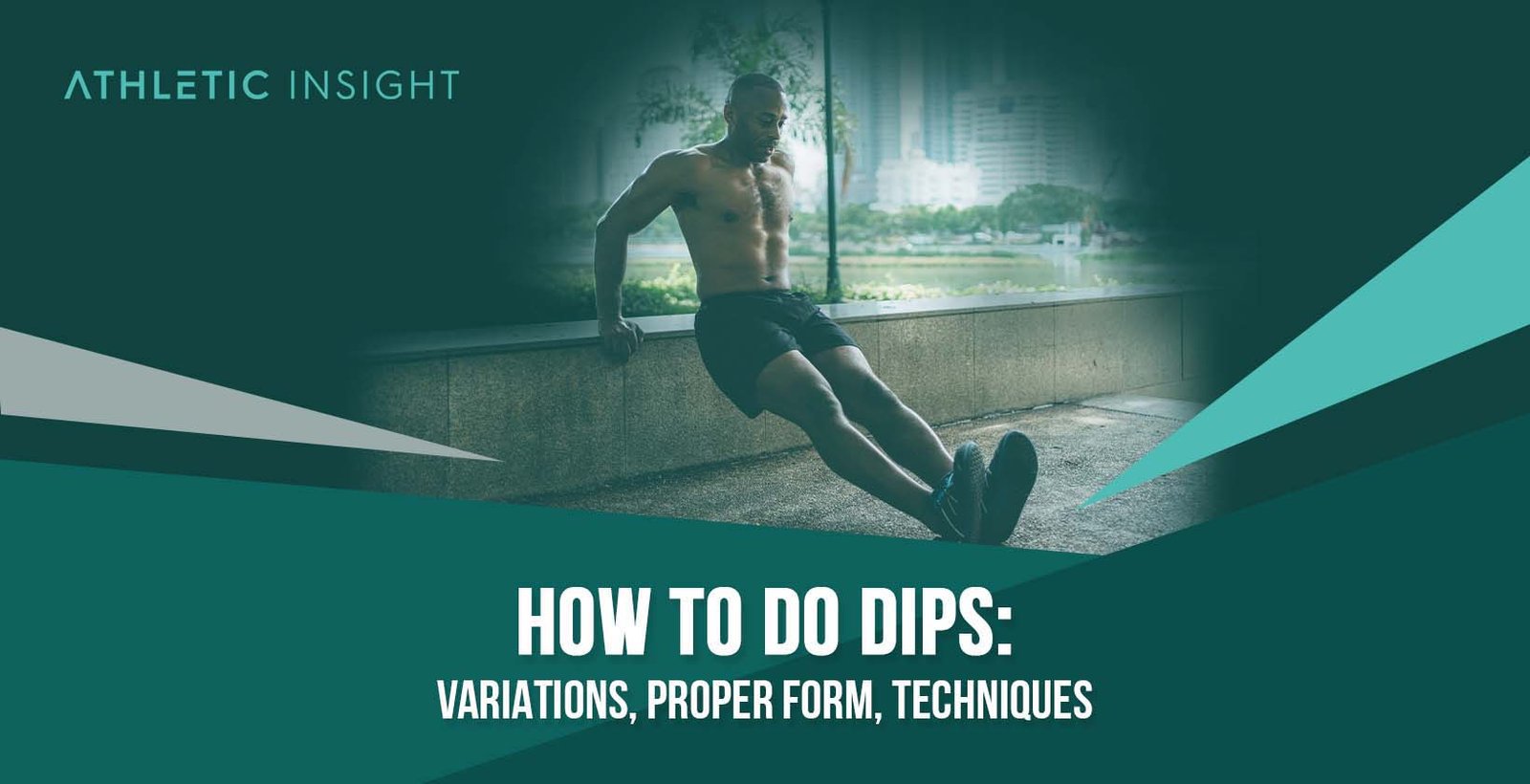To perform Romanian Deadlifts (RDL), stand with feet hip-width apart, hinge at the hips, and lower the barbell close to your legs. Maintain a slight bend in the knees, a flat back, and lift by extending through the hips.
The Romanian Deadlift, commonly abbreviated as the RDL, stands as a quintessential exercise for reinforcing the posterior chain muscles, targeting hamstrings, glutes, and lower back. This variation of the conventional deadlift brings a strategic focus on hip hinge mechanics, encouraging superior strength and flexibility, especially critical for athletes’ performance.
Mental and physical readiness is key; carefully selecting the appropriate weight will facilitate proper form, ensuring the benefits are fully reaped without risking injury. Ideal for both beginners looking to stimulate muscular development and seasoned lifters aiming for intense muscle engagement, the RDL garners unmatched popularity in strength training programs. Integrating Romanian Deadlifts can significantly enhance your lower body’s structural integrity and overall lifting proficiency.
Introduction To Romanian Deadlifts
Imagine a full-body exercise that strengthens your back, legs, and core. That’s the Romanian Deadlift, or RDL. Unlike traditional deadlifts, the RDL focuses on hamstring and glute engagement. This exercise is perfect for everyone wanting to build muscle and improve functionality.
Origins Of The Romanian Deadlift
This powerful move got its name from Romanian Olympic weightlifter, Nicu Vlad. It helps athletes like Vlad lift more weight by creating strong hamstrings and glutes. Today, it’s popular worldwide, helping people get fit and strong.
Benefits Of Incorporating Rdl Into Your Routine
- Improves posture: RDLs work your lower back and core, preventing slouching.
- Enhances flexibility: Stretching your hamstrings increases leg flexibility.
- Builds muscle: Targeting hamstrings and glutes, RDL can grow these muscles.
- Strengthens grip: Holding the bar challenges hand and forearm strength.
- Boosts balance: RDLs require and develop excellent balance and coordination.
Anatomy Of The Romanian Deadlift
The Romanian Deadlift (RDL) plays a vital role in strengthening the posterior chain. Understanding the anatomy of this exercise is key to reaping its benefits. The RDL targets specific muscle groups and differs from a traditional deadlift in some crucial ways. Mastering its form can lead to significant gains in muscle strength and physical performance.
Key Muscles Targeted
The Romanian Deadlift focuses on several key muscles. These muscles include:
- Hamstrings: They work to extend the hip during the lift.
- Gluteus Maximus: This is the main muscle for hip extension.
- Erector Spinae: They maintain a straight spine.
- Adductors: They stabilize the thighs.
- Core Muscles: These keep the torso rigid.
Rdl Vs. Traditional Deadlift
The RDL and traditional deadlift are similar, but have key differences. Below are main points:
| RDL | Traditional Deadlift |
|---|---|
| Targets hamstrings more. | Works the entire posterior chain. |
| Bar starts at hip level. | Bar begins on the ground. |
| Less stress on the lower back. | More lower back involvement. |
| Focus on hip hinge movement. | Involves a squatting motion too. |
By emphasizing the hip hinge and minimizing knee bend, the RDL places greater focus on the hamstrings and glutes.
Setting Up For Success
The Romanian Deadlift, or RDL, is a fantastic exercise for building lower body strength. Proper setup is crucial for maximizing benefits and avoiding injury. This section will guide you through choosing suitable equipment, getting into the starting position, and selecting the best grip option.
Choosing The Right Equipment
The right equipment can make all the difference. Start with a barbell that feels comfortable. Consider the weight of the bar. Standard barbells typically weigh 45 pounds, which is great for most lifters. Beginners may opt for a lighter one. Rubber-coated or bumper plates are excellent for controlling noise and reducing damage to the floor. Make sure collars or clips are available to secure the weights.
Starting Position And Stance
Your stance is the foundation of your RDL. Position your feet hip-width apart for stability. Your toes should point forward or slightly outwards. Keep your spine neutral and shoulders back. The barbell should be close to your shins. Bend at the hips and knees. Make sure your hips are above your knees and your head is looking ahead.
Grip Options
Grip is crucial for control. You have two main options. The double overhand grip is where both hands face towards you. It’s simple and great for beginners. Mix grip has one hand facing towards you, the other away. This grip can handle more weight. Use weightlifting straps if grip strength is a limiting factor. Make sure to alternate the mixed grip to prevent imbalances.

Credit: uppper.com
Executing The Romanian Deadlift
Perfecting the Romanian Deadlift, or RDL, is like mastering a powerful spell in the wizardry of weightlifting. This compound exercise targets your posterior chain, which includes your hamstrings, glutes, and lower back. Ready to engage those muscles and boost your strength? Follow these steps to perform a flawless Romanian Deadlift with precision.
The Descent Phase
The descent is the initial magic of the RDL. Imagine your hips as a hinge; this is where the movement starts.
- Stand with feet hip-width apart, knees slightly bent.
- Grip the barbell with hands shoulder-width apart.
- Breathe in, keep your chest up, and push those hips back.
- Let the barbell slide close to your body as you descend.
- Descend until you feel a stretch in your hamstrings or the barbell reaches mid-shin, whichever comes first.
Maintaining Proper Form
Form is your secret ingredient for an effective RDL. Mess it up, and the spell won’t work.
- Keep your back straight, never rounded.
- Shoulders should be over the bar to engage the lats.
- Neck aligned with your spine, eyes looking downward.
- Control the descent; no freefalling.
- The bar remains close, grazing your legs slightly.
The Ascent And Lockout
After the descent, prepare for the captivating finale: the ascent and lockout.
- Drive through the heels, thrust the hips forward.
- Squeeze your glutes tight as you rise up.
- Lockout at the top with a mighty glute and hamstring contraction.
- Stand tall, don’t over-extend your back.
- Reset, take a breath, and you’re ready for the next rep.
Common Mistakes To Avoid
Mastering the Romanian Deadlift (RDL) is a game-changer for your fitness routine. It’s essential to avoid common mistakes to get the most out of this powerful exercise. These errors can hinder performance and increase injury risk. Pay close attention to the following missteps.
Improper Back Alignment
Keeping your back straight is crucial when performing an RDL. An arch or rounded spine can lead to discomfort or injury. Here are key points to maintain proper alignment:
- Stand tall with your shoulders back and chest out.
- Engage your core to support your spine.
- Imagine pulling your shoulder blades together slightly.
- Ensure your neck remains neutral, aligning with your spine.
Incorrect Hip Hinge
The hip hinge is the RDL’s foundation, but often performed incorrectly. Avoid these pitfalls:
- Don’t bend your knees too much; this is not a squat.
- Push your hips back as if closing a car door with your glutes.
- Maintain a slight bend in your knees throughout the movement.
- Focus on moving the hips backward, then forward, using your glutes and hamstrings.
Overloading The Bar
It’s tempting to lift heavy, but overloading can compromise form. Stick to manageable weights with good technique. Here’s how to know if you’re overdoing it:
- You can’t complete a set without sacrificing form.
- You feel the strain in your lower back, not your hamstrings.
- Reducing weight often increases muscle engagement and reduces injury risk.
- Track your progress, and increase weight gradually.

Credit: m.youtube.com
Advanced Techniques And Variations
Romanian Deadlifts (RDLs) are a powerhouse exercise for enhancing your lower body muscles. Once you have the basic RDL technique dialed in, incorporating advanced methods can optimize your strength training and muscle engagement. Mix up your routine with these variations to challenge your body in new ways and break through plateaus.
Using Deficit To Increase Rom
Deepening the range of motion (ROM) in your RDLs can seriously upgrade your hamstring and glute work. The deficit RDL employs a raised platform — like a weight plate or step — to extend the distance the bar travels. This increased range intensifies the stretch and contraction of your target muscles.
- Stand on a sturdy platform.
- Ensure to maintain a neutral spine.
- Use a controlled tempo to avoid injury.
Incorporating Resistance Bands
Resistance bands add an unexpected twist to RDLs. They provide continuous tension throughout the lift, targeting your muscles even more. Secure the band under your feet and over the barbell to spice up your RDL routine.
- Choose the right band for adequate resistance.
- Focus on controlled, smooth lifts.
- Feel the extra pull when you return to standing.
Single-leg Rdl For Stability
Single-leg RDLs zero in on your balance and stability. This unilateral variation can uncover differences in strength between your legs. It helps to improve coordination and core engagement too.
- Keep one foot grounded while the other lifts back.
- Hinge at your hips, just like a regular RDL.
- Use a mirror to check your form.
- Try without weights first, then progress.
Incorporating Rdl Into Your Workout Plan
Romanian Deadlifts (RDLs) are a powerful way to strengthen your glutes, hamstrings, and lower back. To effectively incorporate RDLs into your fitness regimen, consider the frequency and number of repetitions, integrate them with other exercises, and keep track of your progress with clear goals. Let’s dive into how to make RDL a staple in your workout plan.
Frequency And Repetition
Start slow with RDLs to avoid strain. Gradually include them in your routine, aiming for 2-3 times a week. Beginners should focus on technique over weight, with 3 sets of 8-12 reps. Advanced lifters can increase weight and vary reps for muscle growth and endurance.
- Week 1-2: Master form with light weights
- Week 3-4: Increase weight if form is correct
- Week 5+: Adjust sets and reps for continued progress
Combining With Other Exercises
RDLs work well within a lower-body or pull-day routine. Pair them with exercises like squats and leg curls for a comprehensive leg workout. On pull-days, follow RDLs with pull-ups and rows to target the back. Ensure a balanced workout by adding core and upper-body moves on alternate days.
| Day 1 | Day 2 | Day 3 |
|---|---|---|
| RDLs | Core Training | Rest |
| Leg Press | Upper-Body Work | Rest |
| Leg Curls | Cardio | Rest |
Progress Tracking And Goal Setting
Track your RDLs to see improvements and stay motivated. Take notes on the weight used, reps completed, and your form quality. Set short-term goals like adding five pounds or doing one extra rep. Long-term goals might include doubling your starting weight or refining your technique.
- Log each workout
- Set realistic weight and rep increases
- Review progress monthly
With a solid plan, RDLs can enhance your strength and stability, giving your workouts a serious upgrade.
Safety Tips And Injury Prevention
Executing Romanian Deadlifts (RDL) safely ensures maximum benefit and minimum risk. By following essential safety tips and proactive injury prevention strategies, you can make the most of your RDL routine. Safety always comes first; let’s explore how to protect yourself during your workouts.
Warm-up Exercises
Before tackling the RDL, it’s critical to prepare your body. A proper warm-up increases blood flow and prevents strain. Try dynamic stretches like leg swings and lunges. Incorporate mobility drills to loosen the hips and hamstrings. Here are some effective warm-up exercises:
- Leg swings: Ten swings per leg.
- Walking lunges: Two sets of ten lunges.
- Hip circles: Ten circles each direction.
Listening To Your Body
Stay in tune with your body’s signals during workouts. Sharp pains, discomfort, or unusual fatigue are red flags. Aim for fatigue, not pain. Working through discomfort can lead to long-term injury.
Respect your current fitness level. Increase weights gradually. Using too much weight before you’re ready causes undue stress on your muscles and joints.
When To Consult A Professional
There are times when self-assessment isn’t enough. Seek a fitness professional if you encounter:
- Persistent pain post-exercise.
- Lack of progress with form.
- Uncertainty about technique.
Professionals provide tailored feedback and can spot issues not obvious to you. This ensures continuous, safe improvement in your RDL technique.
Next Steps: Beyond The Romanian Deadlift
Mastering the Romanian Deadlift (RDL) sets a solid foundation for strength. Yet progress doesn’t stop there. Exploring further exercises and routines ensures continued improvement and diversity in your fitness journey.
Continuing To Challenge Your Lower Body
Once your RDL technique is on point, it’s time to up the ante. Try these variations and exercises:
- Single-leg RDL: Refines balance and targets each leg individually.
- Sumo Deadlift: Shifts focus to inner thighs and glutes.
- Barbell Hip Thrusts: Complements RDLs by emphasizing glute activation.
Progress in weight and reps consistently, but maintain form. Add complexity with balance-challenging movements. Engage the core for stability.
Integrating Rdl Into A Full-body Routine
The RDL is versatile. It can slide into various workout segments:
- Upper/Lower Split: Pair with upper body pulls on lower days.
- Push/Pull/Legs: Fit RDLs into pull or leg days for posterior focus.
- Full-body Workouts: Combine with squats and presses for balance.
Remember the importance of rest. Muscles need recovery to grow stronger.
Seeking Further Fitness Education
Knowledge empowers. Dive deeper into these resources:
| Resource Type | Description |
|---|---|
| Books | Experts share insights on technique and programming. |
| Workshops | Hands-on learning with professionals. |
| Online Courses | Flexibility to study anytime, anywhere. |
Fit learning into your schedule. Apply newfound knowledge to boost your workouts. Connect with a community that encourages growth.

Credit: www.muscleandfitness.com
Frequently Asked Questions On How To Do Romanian Deadlifts (rdl)
What Are Romanian Deadlifts Good For?
Romanian Deadlifts (RDLs) target the posterior chain muscles, which include the hamstrings, glutes, and lower back. They’re excellent for improving overall strength, posture, and athletic performance. RDLs also help with muscle symmetry and can prevent injuries.
How To Properly Perform A Romanian Deadlift?
To perform a Romanian Deadlift, stand with feet hip-width apart, hold a barbell with a shoulder-width grip. Keep your back straight, hinge at the hips, and lower the barbell while maintaining a slight bend in the knees. Stop when you feel a hamstring stretch, then return to the start.
Can Beginners Do Romanian Deadlifts?
Yes, beginners can perform Romanian Deadlifts with proper form and a suitable weight. It’s beneficial to start with light weights or even a broomstick to master the hip-hinge movement before adding resistance.
What’s The Difference Between Rdls And Conventional Deadlifts?
The main difference is the leg position. In RDLs, the legs remain relatively straight, emphasizing hamstring and glute engagement, whereas conventional deadlifts involve more knee bending, recruiting more quadriceps and allowing for heavier lifting.
Conclusion
Perfecting your Romanian Deadlift technique can significantly boost your lower body strength and improve overall fitness. Remember to focus on form, not just the weight. Consistency and attention to detail will yield the best results. Now, grab those weights and start your RDL journey to a stronger, healthier you!


